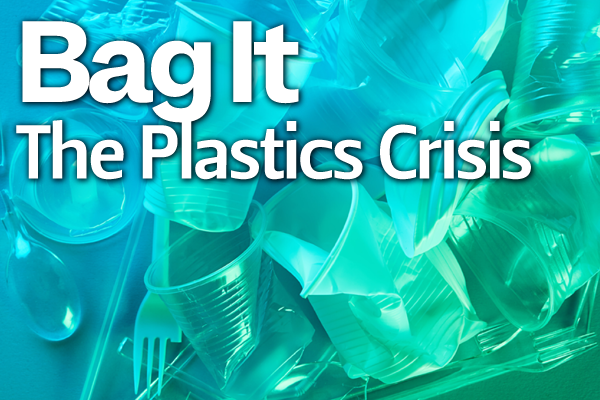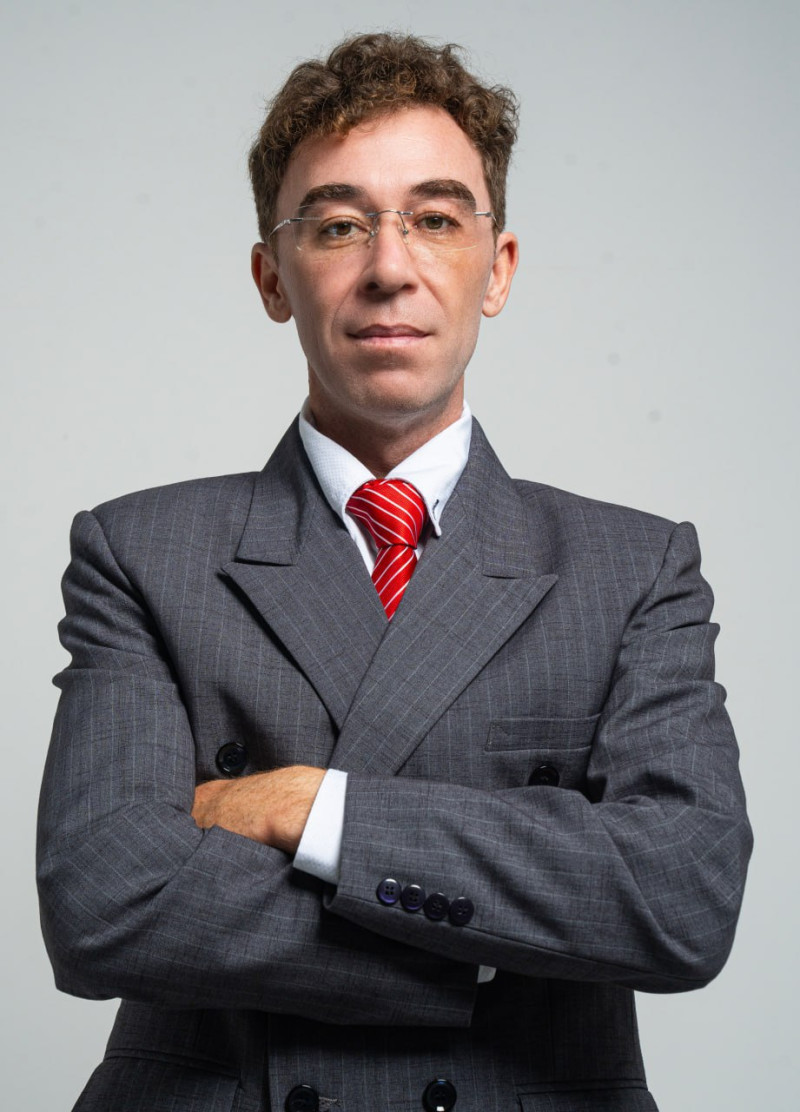As Plastic Treaty Delegates Head to Canada, A Plea From the Arctic: Don’t Forget Vulnerable Indigenous Peoples
Indigenous people from Arctic communities are calling for environmental protection in the runup to this month’s round of negotiations aimed at securing a global treaty to end plastic pollution.
U.N. talks resume April 23 in Ottawa and are expected to draw delegates from nearly 180 countries to Canada who seek to advance a plastics treaty with an ambitious charge: to embrace a broad definition of the problem that encompasses “the full life-cycle” of plastics.
At the meeting, Alaskan Natives and Canadian First Nations indigenous people will urge delegates to focus on industrial chemical pollutants – including micro- and nanoplastics – that travel through ocean and air currents to far northern latitudes. They will share a new report that reviews the latest science on how chemicals and plastics are now found in traditional food sources such as walruses and seals and threaten Arctic people’s health and environment.
“To learn that these microplastics are ending up in our main foods, but also in our bodies, is yet another alarm for the decision makers,” said Vi Waghiyi, environmental health and justice director with the Alaska Community Action on Toxics, an Anchorage-based environmental justice organization.
We’re hiring!
Please take a look at the new openings in our newsroom.
See jobsWaghiyi is a tribal citizen of the native village of Savoonga, located on St. Lawrence Island in the Bering Sea, and a White House Environmental Justice Advisory Council member. She noted in an interview with Inside Climate News that little is known about the toxicity of many chemicals used to make plastics, and indigenous people are particularly at risk. “It’s important that we’re at these (negotiations), being some of the most highly contaminated populations on the planet because of our reliance on our subsistence foods,” she said.
Waghiyi is a co-author of “The Arctic’s Plastic Crisis: Toxic Threats to Health, Human Rights and Indigenous Lands from the Petrochemical Industry,” a report released Tuesday by Alaska Community Action on Toxics and the International Pollutants Elimination Network (IPEN), a global network of more than 600 nongovernmental organizations in 128 countries working to eliminate toxic pollutants.
“The Arctic is a hemispheric sink for chemicals and plastics that are transported on atmospheric and oceanic currents from lower latitudes through a process known as global distillation or the grasshopper effect,” according to the report. It points to “the combined effects of chemicals and plastics in the Arctic that are exacerbated by rapid climate warming, all of which are consequences of destructive exploitation by the fossil fuel, chemicals, and plastics industries.”
U.S. Appears to Look for Middle Ground
The meeting in Canada will be the delegates’ fourth in a two-year process to reach an agreement on plastics by year’s end. Talks bogged down five months ago in Nairobi when fossil fuels lobbyists came out in force to weaken proposals. A final meeting is planned for late November, and there is some hope that the Canada talks could re-set the effort.
Still, environmental groups are worried that oil-producing countries, including the United States, could stall or weaken efforts to address what the United Nations has identified as “a triple planetary crisis” of climate change, nature loss and pollution.
“This meeting is, to a degree, make or break,” said Björn Beeler, the international coordinator with IPEN.

The timeline will be in doubt if delegates “come out of Ottawa with the same type of uncertainty, as the last meeting in Kenya,” Beeler said. The talks will determine if the agreement is “a skeleton framework to be completed later” or, a plan of accountability that will have “plastic control measures, and hold the plastic industries responsible to address the exploding plastic crisis they created,” he said.
Some countries, through the talks, have aligned. There is one coalition dubbed the nations of “high ambition” including dozens of countries and the European Union that seek “binding provisions in the treaty to restrain and reduce the consumption and production of primary plastic polymers to sustainable levels.” Another is calling itself the coalition of “like-minded countries,” including Bahrain, Saudi Arabia, Russia, China, Iran and Cuba, that resists production cuts while favoring waste management and recycling solutions. Many in that group are major oil or gas producers.
The United States, as the leading global oil producer, is described by critics as having “low ambition.” It is not aligned with any treaty coalition. The Biden administration appears to be searching for a middle ground, perhaps reflective of deep political divisions at home. The State Department declined requests for comment on the Ottawa meeting.
The plastics crisis and treaty negotiations were discussed in a session at the Society of Environmental Journalists conference in early April in Philadelphia. Grant Cope, a senior advisor to Environmental Protection Agency Administrator Michael Regan, told journalists there that the Biden administration wants “a universally binding treaty that reduces plastic pollution … across the entire lifecycle.” An environmental lawyer, Cope said the agreement needed to offer “flexibility for individual countries” to select the best method for plastic pollution reductions at home.
Cope said he agreed that the treaty should address top priorities: “chemicals of concern” in plastics, “non-essential single use plastics,” and microplastics. And, noting tensions among the participants, he said the agreement should look for consensus across “the entire world.”
”It’s hard to find 180 individuals who can agree much less180 countries,” Cope said about the treaty effort. “We have to find something that is meaningful…and that really makes the lives of people across the world better.”
Researchers Study Plastics Threats, Costs
The talks are taking place amid a growing awareness of the scope of the the threat plastics pose to the planet despite their many practical uses.
Petrochemical companies produced 460 million metric tons of plastic in 2019, an amount that could triple by 2060, according to the Paris-based Organization for Economic Cooperation and Development. Across the globe, less than 10 percent gets recycled.
In March, European researchers with the Plastchem Project, funded by the Norwegian Research Council, counted a staggering 16,000 chemicals found in various plastics, 3,000 more than were identified in an earlier United Nations report. As many as a quarter of the chemicals in the new study are considered harmful to people or the environment.
Plastic waste can accumulate in giant gyres of garbage in the ocean. In turn, the waste can and be consumed by marine mammals, causing serious health problems or death.

As plastic breaks down in the environment from sunlight or weathering, or through mechanical processes that scrape, chop or abrase, it can turn into smaller particles, and micro- and even smaller nano-plastics have spread around the globe. Inhaled or injested, this plastic residue has now been documented in the blood, feces and placental fluids of humans.
In March, an international team of scientists reported in the New England Journal of Medicine that they had discovered polyethylene (a resin often used in bags, bottles and films) in the carotid artery plaque of 150 of 304 patients participating in a cardiovascular study. Three years later, those patients with plastic in their arteries had a higher risk of heart attack, stroke, or death than those found to have no such plastic in their plaque, according to the researchers.
Plaque is made up of deposits of cholesterol — a waxy, fat-like substance produced by the liver — and can narrow arteries, blocking blood flow, according to the Centers for Disease Control and Prevention.
In January, a study published in the Journal of the Endocrine Society linked the use of some plastic additives — chemicals that make plastics more flexible and durable — as contributing to high health-care costs in the United States. The study concluded that these endocrine-disrupting chemicals, including phthalates and other plastics additives, could be linked in 2018 to an estimated $250 billion in added health costs.
Dr. Leonardo Trasande, the study’s lead author, told journalists at the recent Philadelphia conference that the link between plastics and health costs should prompt change.
“I’m just shocked that we’re even having a conversation about an industry that … is probably making $750 billion revenue on the backs of $250 billion in health costs,” said Trasande, a pediatrician and professor at the New York University Grossman School of Medicine and Wagner Graduate School of Public Service in New York.
In January, Trasande and researcher Marina Fernandez, based in Argentina, published an article in the Journal of the Endocrine Society assessing the plastics treaty efforts, saying the talks offer “the opportunity for harmonized, international regulation of chemicals with endocrine disrupting properties present in plastic products.”
Fernandez, in an email to further explain the study, said the treaty could be a “strong, legally binding instrument that protects human and environmental health by limiting plastic production and reducing exposure to harmful endocrine-disrupting chemicals in plastics.”
Industry Objects to Production Limits
Delegates have formulated a wide range of options in a 69-page document called a “zero draft,” with noted areas of possible agreement and conflicting propositions. Among the contentious issues: whether the agreement should mandate caps or reductions on plastic production, or how it might limit the use of certain toxic chemicals found in plastic products and waste.
Environmental and health advocates said the Biden administration must clearly signal that it is committed to a treaty that robustly addresses plastic pollution across a spectrum including oil and gas extraction, the production of plastic, and the use and the disposal of plastic.
“We’ve yet to hear that from the State Department,” said Rachel Radvany, environmental health campaigner with the Washington, DC.-based Center for International Environmental Law.
The America’s Plastic Makers, part of the American Chemistry Council lobbying group, cites benefits of plastics as a major reason to not cap or slow their production. Ross Eisenberg, the Plastic Makers’s president, attended the journalism conference in Philadelphia this month to make the case for continued plastic use. Plastics are needed to produce “everything from wind turbines to electric vehicles, to food safety to medical grade” plastics, he said at the conference.
The chemical industry wants to be part of the solution with improved waste collection and recycling, consumer education and better plastic design, he said.
“We think that the agreement should focus on ending plastic pollution, which was the assignment from the U.N., and plastic pollution particularly in the marine environment, and certainly not ending plastic production. We know that plastic is important,” Eisenberg said.
Researchers from Lund University in Sweden examined the written submissions of countries participating in the treaty process and have concluded that any treaty will likely be limited.
“If current trends continue, we can expect a treaty focused on waste management and recycling, instead of one addressing the full life cycle of plastics,” according to their report, “Towards a Global Plastics Treaty: Tracing the U.N. Negotiations.” That will result in policies with limited success, the report warned.
“There is no silver bullet solution to plastic pollution,” Tara Olsen, one of the authors, said in an email about the findings. “That is why we have to address the full life cycle of plastics … with a wide policy mix.
“That starts,” she said, “with turning off the tap upstream.”
The concentration of microplastics is higher in the Arctic Ocean than any other ocean in the world, and microplastics are found in many different fish Arctic fish species, said Pamela Miller, executive director and senior scientist at Alaska Community Action on Toxics, and a co-author of the Arctic report on plastic and petrochemical pollution.
Waghiyi, the native of Savoonga who also authored the Arctic report, said she will be in Ottawa as part of an Arctic indigenous peoples delegation that has participated in prior U.N. treaty efforts. “We have to make sure that these treaties are as strong as possible to protect vulnerable populations, like the Arctic indigenous peoples,” she said.
Share this article
Disclaimer: The copyright of this article belongs to the original author. Reposting this article is solely for the purpose of information dissemination and does not constitute any investment advice. If there is any infringement, please contact us immediately. We will make corrections or deletions as necessary. Thank you.







